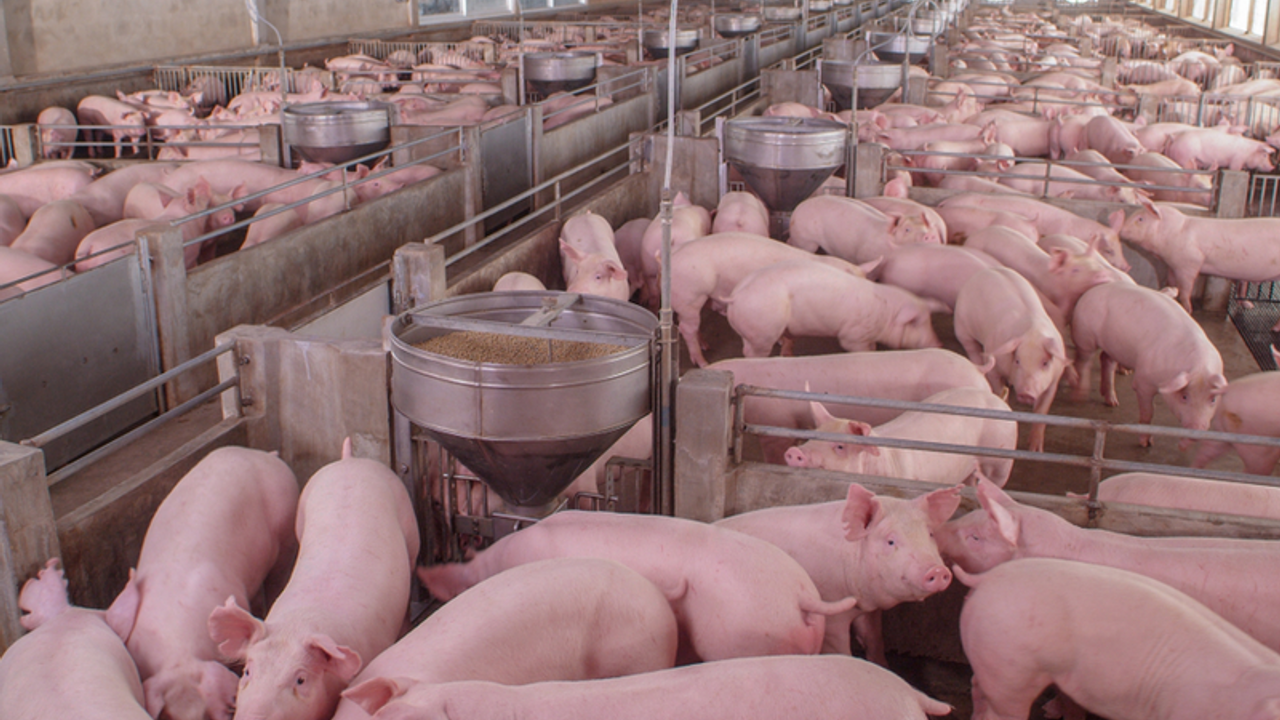
When is more not always better in swine nutrition and, inversely, when is it actually better?
May 04, 2022Hi - when it comes to swine nutrition, if you take a step back and look at it as a whole, you may think “More nutrients = faster growth”. Right?
Well, it’s not quite that simple. That may be the case for some nutrients but in this lesson, we will share with you 2 instances where that is not always the case and 2 instances where it actually is.
I was drafting some thoughts with Clayton Chastain (the host of the Swine Nutrition Blackbelt Podcast) yesterday and this is what we arrived at.
First, let's talk about when more is NOT better…
1. Calcium
Calcium is an essential nutrient in swine diets, and along with phosphorus, is responsible for bone mineralization, development, and density in pigs. It is mainly supplied in the diet via limestone, the cheapest ingredient for swine diets. This can be a problem when using a least-cost formulation software because if no maximums are set, it will try to include as much limestone as possible. The problem with that is if there is too much calcium in the diet, even if you have more than the minimum requirement of phosphorus, you will start to see phosphorus deficiencies because excess calcium limits the amount of phosphorus that the pig’s body can absorb. That is why calcium and phosphorus are typically expressed as a ratio to one another. An ideal Ca:P ratio for nursery pigs is around 1.0 whereas in finishing pigs it is closer to 1.35 - 1.50 total Ca:P.
2. Branched-chain amino acids (BCAA)
This is a relatively lesser-known fact about swine diets. It is universally understood that each amino acid has a minimum requirement and the limiting AA in swine diets is lysine. However, BCAA’s can limit one another even if lysine is at an adequate amount. Similar to the Ca:P ratio all three BCAAs (Leucine, Isoleucine, and Valine) share transporters in the body so if one AA is in excess, that limits the bioavailability of the others. Diets with DDGS tend to have excess Leu which can have a harmful effect on pigs by saturating the transporters with too much Leu, thus not allowing enough Iso or Val to be utilized. If feeding excess Leu, be sure to include excess Iso and Val in the diet to maintain an optimum ratio. Also, this can be easily overlooked, though tryptophan is an aromatic AA, not a BCAA, there are transporters in the pig's body that transport all 3 BCAAs as well as tryptophan. So, using the same logic, it is possible that excess Trp may be needed in the diet if there is excess BCAAs, though more research needs to be done to determine just how much that truly impacts growth.
Now let's talk about a couple of instances where more IS actually better…
3. Superdosing phytase
Phytase is basically a “must-have” for swine diets nowadays. It is incredibly cheap and is an excellent way to release more bound-up phosphorus in the diet to make it more bioavailable for the pig. We normally include just enough phytase in the diet to release the max amount of phytate which typically maxes out at around 70% phytate release, but there are a few areas where feeding phytase at superdose levels (~2000 FTU) benefits the pig.
The mechanisms behind how superdosing phytase helps the pig are not entirely known though there are several hypotheses that could explain it. Several good research studies have shown that superdosing phytase in the nursery can increase ADG and sometimes improve feed efficiency, though the main benefit is from the increase in ADG. This increase in ADG can be even greater if the diet is marginal in the concentration of digestible phosphorus, amino acids, and other nutrients.
Nursery pigs are not the only ones who can benefit from superdosing phytase. Though there hasn't been any good data showing benefits when fed to finisher pigs, there have been studies that suggest boars and lactating sows may benefit from superdosed levels. Studies have shown that superdosing phytase in boars has been shown to increase sperm cell concentration in the ejaculate. Superdosing phytase in late gestation through lactation for sows doesn’t have much data available, but there are some studies that suggest it can increase piglet survivability and overall litter weight gain while possibly decreasing farrowing duration which may consequently decrease the number of stillborns.
4. Pharmacological zinc
Zinc (Zn) is often fed in the nursery period to meet the animal's requirements at 50-110 ppm. However, pharmacological levels of Zn can be fed (2000-3000 ppm), especially during times of bacterial challenges, to increase growth and reduce post-weaning diarrhea (PWD). It is recommended to only feed pharmacological levels of Zn for the first 3 weeks after weaning. Any longer than that could result in Zn toxicity. When using inorganic forms of Zn, you should only feed it in the form of zinc oxide (ZnO) during the first 3 weeks of weaning if you want to feed pharmacological levels. Other inorganic forms, such as zinc sulfate (ZnSO4), have been shown to cause toxicity at levels as low as 1000 ppm.
Hope you enjoyed part 2 in our Thoughts on Swine Nutrition Series. Keep an eye out for part 3 later this week.
Talk soon,
Marcio
p.s. In the past we have organized and taught many successful swine nutritionists and non-nutritionists in our Elite Swine Nutritionist program, however, this will be the last time this program will be offered in its current format. If you have ever considered joining the team of Elite Swine Nutritionists, this is your opportunity, and the opportunity begins in 5 days. Monday, May 9th, at 10 am CST, we will open ONLY 18 spots. If you have any doubt about joining, please let me know - [email protected]
If you do not want to hear more about swine nutrition content, click here
